Affiliate disclosure: This post may contain affiliate links. Please see our Privacy Policy.
Baking a pie outdoors in a dutch oven isn’t any more complicated than indoor baking, and doesn’t heat up the house in the summer months. Once you get the process down, you can have a fresh homemade pie anytime you want, even while camping.
Dutch ovens are extremely versatile, and they can be used to bake just about anything you can make in a household oven. Baking a pie in a dutch oven is no different than baking a pie indoors. Start by making your favorite pie recipe, prep some coals and go to work baking a homemade pie outdoors without heating up the house.
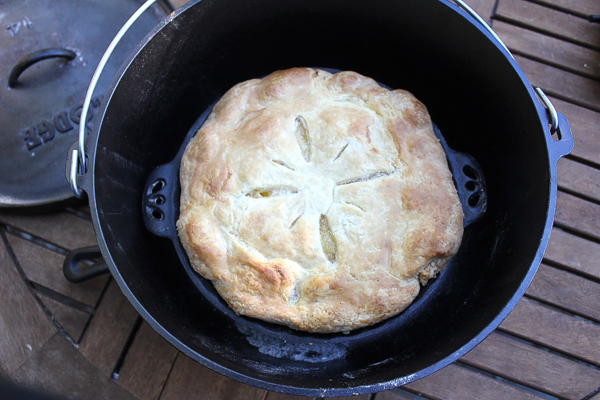
Most pies require an initial bake at a high temperature, around 425 for 30 minutes. This sets the crust and prevents the pie from getting soggy. After that, the oven is turned down to around 350 for another 20-40 minutes to cook the pie filling all the way through.
This two-stage cooking process is actually ideal for a dutch oven. The coals are naturally going to peter out a bit as they use up fuel. Beyond that, turning down the temperature is as easy as removing a few coals with a set of long-handled tongs.
While you can just bake a pie directly in the bottom of the dutch oven using parchment dutch oven liners, I’ve been using my extra-large dutch oven to bake pies right in a pie plate. This keeps the dutch oven clean, prevents it from absorbing flavors, and means that I can use the same dutch oven to bake several things, one after the other.
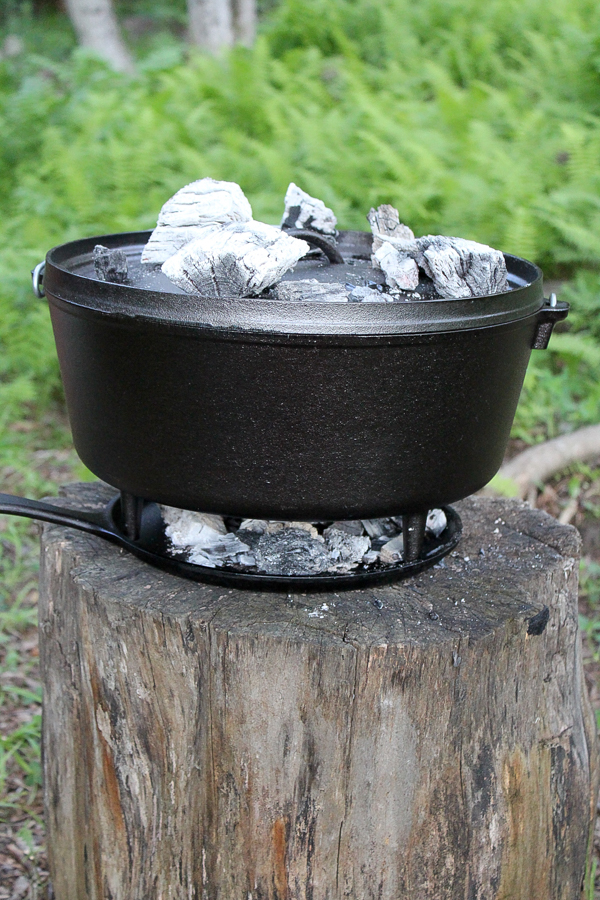
When I baked my dutch oven banana bread, the coals were going strong and the oven was hot for a full 2 hours after the banana bread finished cooking. That’s a lot of extra heat in those coals, and it’s a shame to waste it.
A standard metal pie pan will work great, but I’m using a cast iron pie pan to help crisp the crust. Baking a pie directly in cast iron helps to crisp the crust and prevents wet fillings from soaking into the bottom.
This is especially good for summer fruit pies like peach or strawberry rhubarb. Summer fruits tend to be wet, and the summer is the best time to bake a pie outdoors.
Cast iron pie pans work wonderfully indoors too, and they’re a great way to cook up a batch of homemade rolls or cinnamon rolls. I picked up mine from Lehmans, but they don’t sell them anymore. Amazon has a couple of different options too from both Lodge cast iron and Camp Chef. The Camp Chef version fits inside my 14” dutch oven, and the lodge version is supposed to be the same size.
I have a cast iron trivet beneath the pie plate, which adds a bit of space between the bottom of the dutch oven and the pie pan. This helps the dutch oven work more like a regular oven and helps the pie cook evenly with indirect heat.
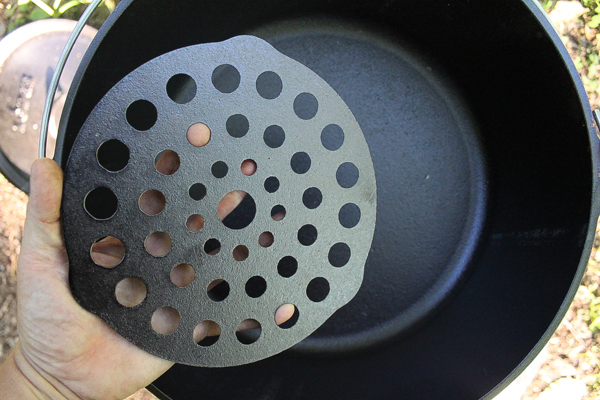
Lodge dutch ovens come with a handy temperature chart that helps you determine how many coals to use both above and below the dutch oven. I’m using a 14-inch dutch oven, which means that I’ll need 25 coals on top and 13 underneath for the initial bake at 425. After that, I’ll turn down the temperature to 350 degrees with 21 coals on top and 11 on the bottom.
Since heat rises, it’s important to put substantially more coals on the top of the dutch oven than underneath. Keep space between the dutch oven and the coals on the bottom, and this will help diffuse the heat.
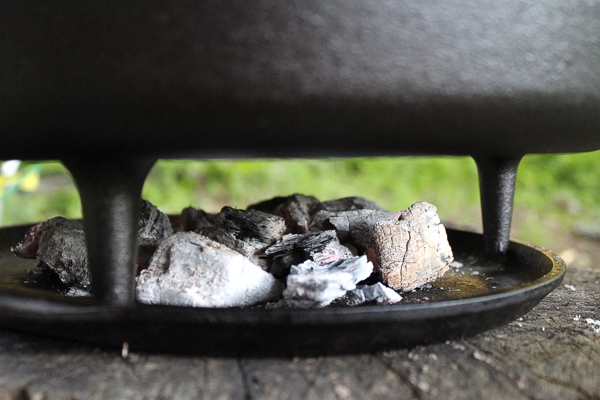
Lately, I’ve been using lump charcoal, which doesn’t have standard briquette sizes. In that case, you just have to wing it…
Regardless of what you’re using for coals, there’s quite a bit of temperature variation when you bake outdoors. Outside temperature, wind and coal size all play a part. Be sure to check your pie a bit early to make sure it’s progressing just right.
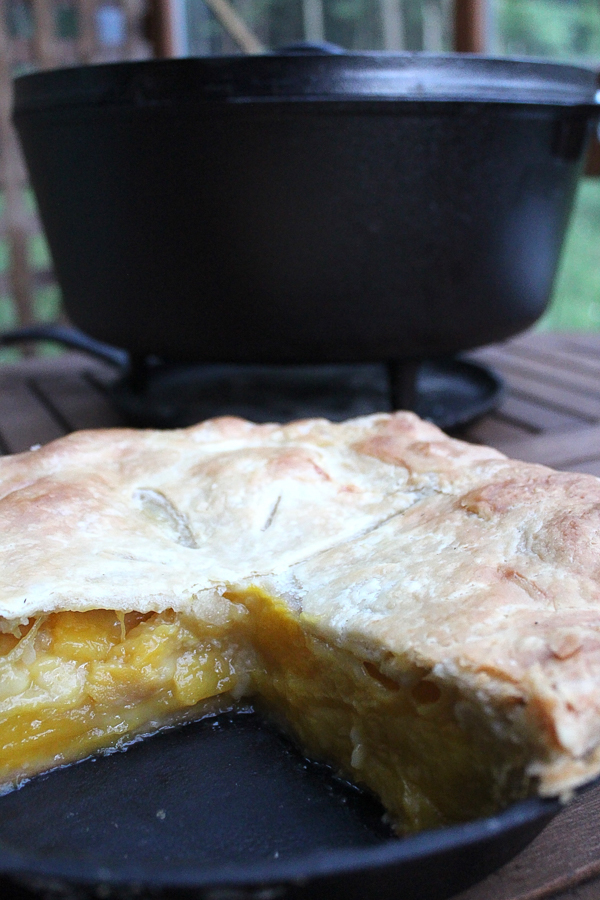
Baking a pie outdoors in a dutch oven may take a bit of vigilance, but it’s well worth it. Slicing into a fresh, homemade pie in the summer months without heating up the house is priceless, and a real homemade pie while out camping is even better.
If you want to make things easy on yourself, canning up some homemade apple pie filling or peach pie filling ahead of time saves a lot of effort. Just roll out the crust (I love this old-fashioned pie crust recipe) and dump in your home-canned pie filling and you’re ready to go.
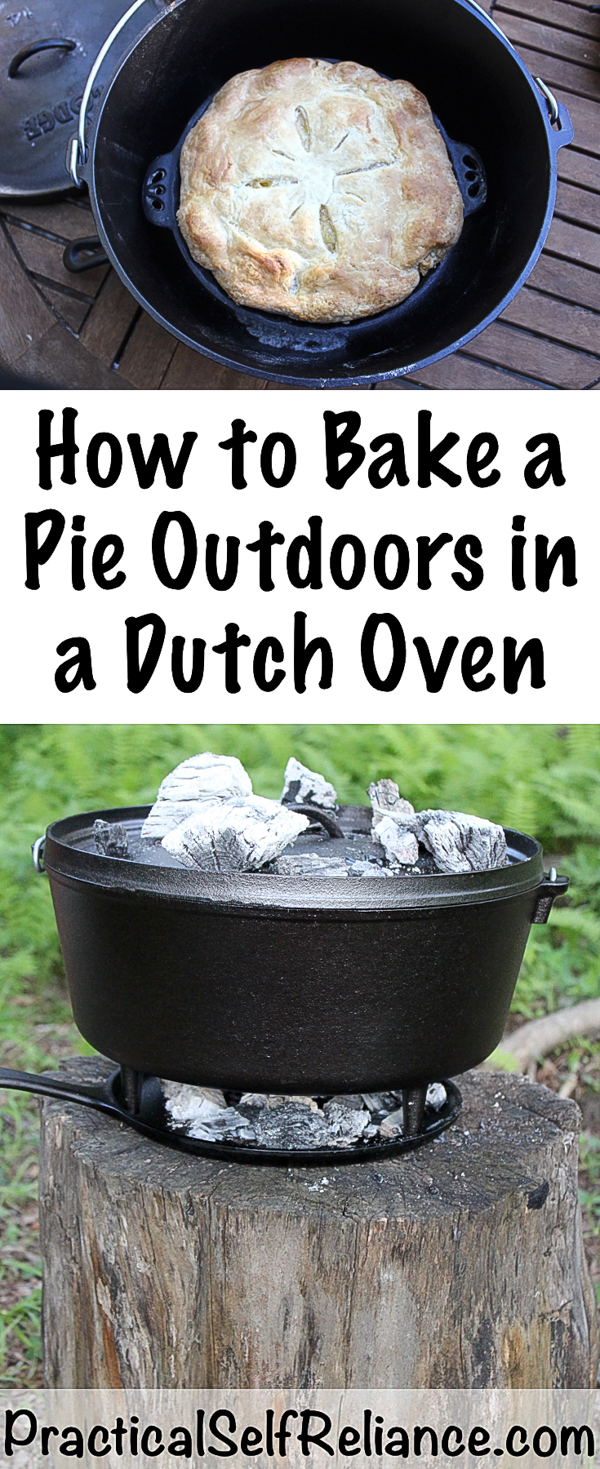
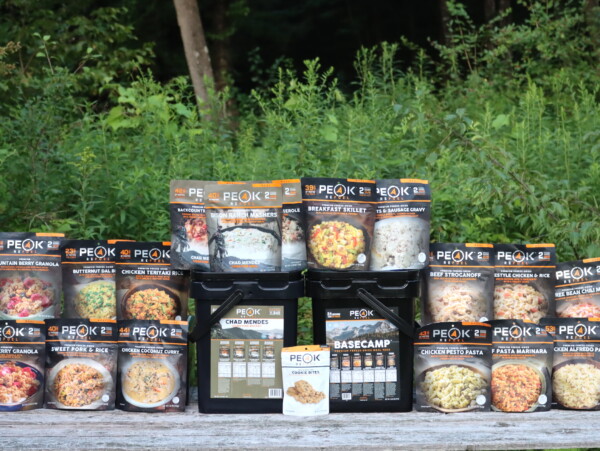
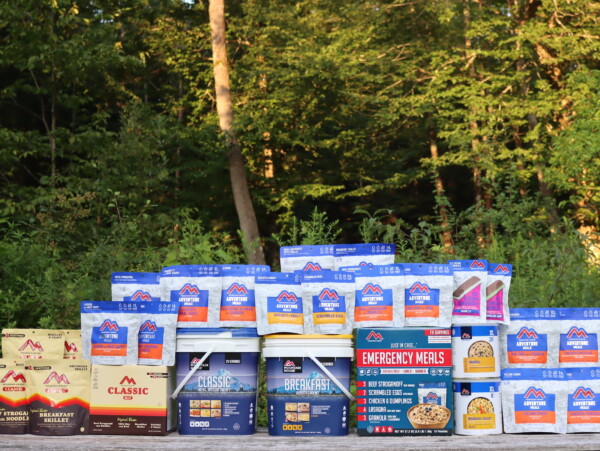
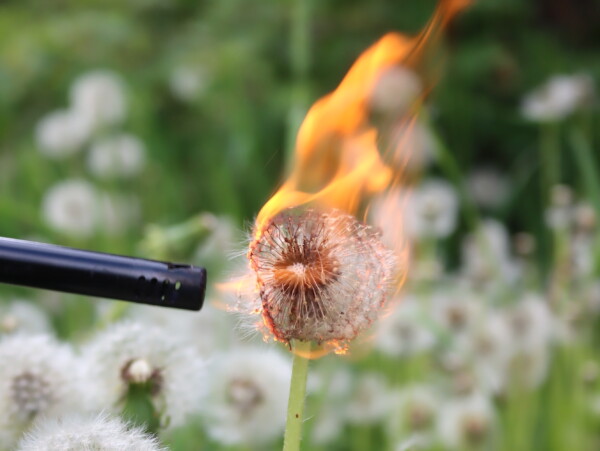
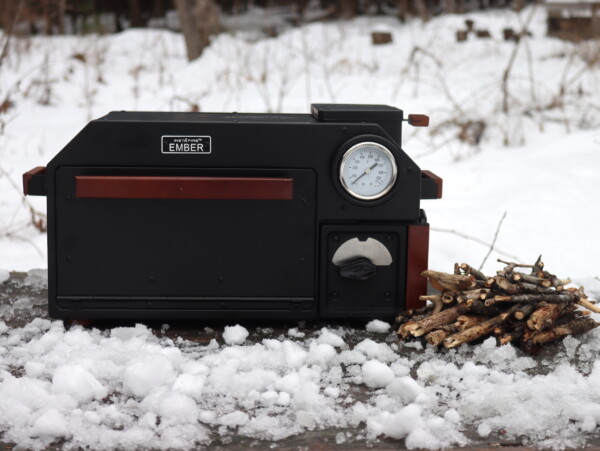
I’d love to see this in a video.
Hi, is your 14” Dutch oven standard depth? If I want to say use a 8×8 cake pan, an 8×4 bread pan and maybe a 6 muffin tin would 14” be the size I would need? Or if small lips to no lips could I use a 12”. I read one place that standard vs deep better for baking but wasn’t sure if needed the space of a deep for bread or is there some head height in the lid too. New to this. Pretty sure a 12” or 14” and had been previously thinking deep till read that new info. So far you look like you use yours closest to how I had envisioned so would love to hear your advice.